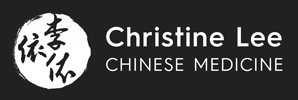Disclaimer: There is currently insufficient evidence-based research on the efficacy of using the LI10 acupressure point in the symptomatic relief of constipation. This article is based on traditional knowledge and clinical experience.
This article is published here as a community service announcement. While constipation is very common, it's not a comfortable topic to discuss. Recommending this acupressure point has produced positive feedback in clinic. The most difficult part is remembering the location of the point. So here it is.
The point: LI10 Shou San Li
This point is the 10th point on the Large Intestine meridian, it's traditional name is Shou San Li (English translation: Arm Three Miles). Professionally, it's referred to as LI10.
Location:
With the arm bent in front of you, find the end of the elbow crease
The point is two thumb widths down along the muscle extensor carpi radialis
Alternately (and more precisely), palpate the area and locate the most tender point - this will be the most effective point to acupressure
Technique:
This acupressure point is used when sitting on the toilet with a full bowel
Make sure you are comfortable, your knees should be above your hips when sitting. Use a footstool if required
Don't strain, pushing with no result can damage the pelvic floor or cause hemorrhoids. Sit and relax the pelvic and abdominal muscles
Locate the point (either arm)
Apply strong pressure, as much as is comfortable
The point tends to be ropey, you can roll your thumb over the point over and over again
Desired result:
Within 15-60 seconds you may feel peristaltic action in your organs. That is, your large intestine may start moving. Depending on the severity of your condition, it can take up to 2-3 minutes to pass the bowel motion
If there is a partial result and the elbow is sore from too much acupressure, try the other elbow to encourage more action
After the bowel motion, the tenderness in the acupuncture point will have disappeared or be significantly reduced
Clinically, this acupressure point seems to produce the best results in people who are suffering from sluggish smooth muscle in the large intestine. Eg: post-stroke, multiple sclerosis or pregnancy patients. It can also be effective in people who suffer from constipation as part of a larger condition, though it is always recommended to address the primary issue. Eg. for people who are chronically dehydrated for any reason, you are best to address this issue. From a Chinese medicine perspective, constipation is almost always part of a larger, primary condition. While using acupressure on this point may be helpful in relieving retention and discomfort, it is best to address the cause.


